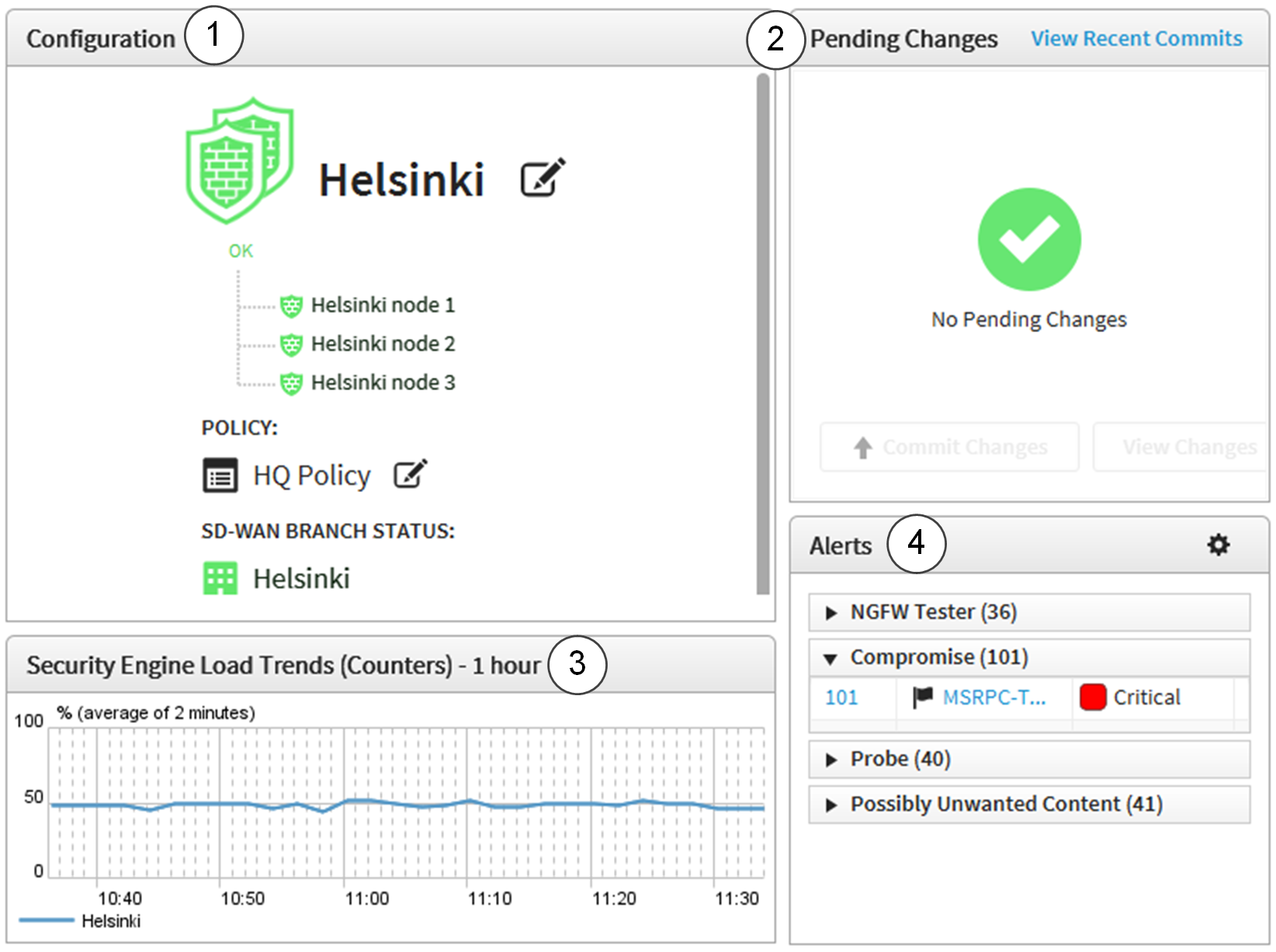What the NGFW Engine home pages show
Home pages show different information depending on the type of element.
Click the status card of an element or select the element in the Status tree to open the home page for the element.
To edit the layout of the element home pages, click ![]() Edit at the top right corner of the view. You can resize panes, or drag new panes into the
view. To remove a pane, drag the pane to the top of the view.
Edit at the top right corner of the view. You can resize panes, or drag new panes into the
view. To remove a pane, drag the pane to the top of the view.
Figure: NGFW Engine home page

- 1
- Shows information about the configuration status and the SD-WAN branch status of the engine.
- 2
- The Pending Changes pane shows configuration and policy changes that have not yet been transferred to the engines. Provides options for viewing, approving, and committing pending changes. The Recent Commits pane shows recent policy uploads. It opens in the same place as the Pending Changes pane.
- 3
- Shows how the traffic load on the NGFW Engine has changed over time.
- 4
- Shows active alerts for the engine. The Tools menu allows you to organize alerts according to the severity or situation type.
When you select an individual NGFW Engine node in the Status tree, the hardware diagram page opens, showing details about the status of network ports. More detailed information is shown in the Info pane for network interfaces and hardware (appliance) status.
 Edit
Edit